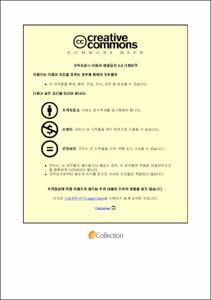울산지역 초등학생 추적조사 자료에서 대기오염 요인을 중심으로 한 알레르기비염 관련 인자에 대한 분석
- Abstract
- 연구 목적
이 연구의 목적은 학동기 아동의 알레르기비염에 영향을 주는 각 요인들 중 특히 대표적인 대기오염물질들을 중심으로 한 환경 요인이 미치는 영향을 확인하는 것이다.
연구대상 및 방법
이 연구는 울산 지역 4개 초등학교의 전학년 학생들을 패널로 하여, 2년 간격으로 추적 조사한 자료를 분석한 것이다. 설문조사는 2009년 6월부터 2018년 4월 15일까지 9년간 다섯 차례에 걸쳐 수행하였다. 설문지는 ISAAC (International society of asthma and allergy of children) 핵심 문항을 일부 변형하여 사용하였다. 알레르기 반응성향을 객관적으로 보완할 지표로서, 24가지 표준 항원에 대해서 피부반응검사를 시행하였다.
실외 대기오염 노출수준 정보를 얻기 위해 각각의 초등학교 인근에 위치한 도시대기측정소에서 수집한 이산화황(SO2), 이산화질소(NO2), 오존(O3), 일산화탄소(CO), 미세먼지(PM10)의 연평균 농도자료를 사용하였다.
분석의 대상이 되는 목표 변수는 세 가지였다.
1. 1년진단력에 의한 알레르기비염의 유병 여부
2. 1년진단력에 의한 알레르기비염의 변화(없다가 생기는 경우) 여부
3. 알레르기비염이 있는 아동에서, 그 다음 조사에서 비염 외 중첩(multi-morbidity)되는 다른 알레르기 질환 개수가 증가하였는지 여부
위와 같이 분석하고 난 뒤, 피부반응검사에서 양성을 보인 아동들로 대상군을 한정해서 다시 1 ~ 3번 항목을 반복 분석하였다.
로지스틱 회귀 분석을 통해 모형에 적합한 변수들을 우선 선별하고, 선별된 변수들을 사용하여 일반화 추정 방정식(GEE)으로 연관성을 평가하였다.
결과
1년진단력으로 본 알레르기비염 유병과 연관성을 보인 요인들 중, 거주지 요인으로 지은지 1년이 안된 새집에 사는 경우 위험도가 높았고, 다세대주택이나 아파트에 사는 경우 단독주택에 사는 것에 비해 위험도가 높았다. 가족력으로 부모와 형제의 알레르기 질환 과거력이 있으면 위험도가 높았고, 개인의 과거력으로 2세 미만에 모세기관지염을 앓은 병력이 있는 경우와, 인구학적 요인으로 여학생보다는 남학생의 경우 위험도가 높았다. 대기오염물질은 알레르기비염 유병 위험도를 증가시키지 않았다.
1년진단력으로 본 알레르기비염의 변화에 영향을 미치는 요인 중에는 NO2, SO2, CO 농도가 증가할수록 위험도가 높았다. 특히 SO2의 위험도가 1.196으로 상당히 높게 나타났다. PM10은 위험도를 증가시키지 않았다.
알레르기비염에 다른 알레르기 질환들이 중첩되는 것에 영향을 미치는 요인으로는 O3 농도가 증가할수록 위험도가 높았다. 공기청정기의 사용 또한 위험도가 높은 쪽으로 연관성이 있었다.
결론
울산 지역 초등학생 패널을 대상으로 한 추적 자료에서, 대기오염 인자를 포함한 위험 요인들이 알레르기비염의 유병, 변화, 중첩에 미치는 영향에 대해서 분석한 결과, SO2와 NO2 등 산업화와 교통요인으로 인한 대기오염물질들의 농도가 높을수록 위험도가 높은 연관성을 확인하였다. 추후 조금 더 정밀한 학교 실내외 환경 측정과, 주소지 정보를 반영한 각 가정에서의 실내외 환경 정보를 바탕으로 하는 후속 연구를 기대해볼 수 있겠다.
|Objectives
The purpose of this study is to identify the effects of environmental factors, particularly representative air pollutants, among the factors affecting allergic rhinitis of elementary school children.
Methods
All panelists of four elementary schools in Ulsan were constructed and surveyed at two-year intervals. The survey used data collected five times over a nine-year period from June 2009 to April 15, 2018. The questionnaire used in the survey was a modified version of the ISAAC (International society of asthma and allergy of children). As an indicator to ensure allergic responsiveness objectively, skin prick test (SPT) was performed with 24 standard antigens.
To estimate outdoor air pollution exposure levels, sulfur dioxide (SO2), nitrogen dioxide (NO2), ozone (O3), carbon monoxide (CO), and particulate matter 10 µm or less in diameter(PM10) concentration data were collected.
Three target variables were used.
1. prevalence of allergic rhinitis by last-1-year diagnosis
2. occurrence of allergic rhinitis by last-1-year diagnosis
3. among children who had allergic rhinitis at the first survey, the increase of number of co-morbid other allergic diseases during last-1-year
Each analysis was repeated again within a limited subject group who had positive SPT.
Logistic regression analysis was used to select variables suitable for the statistical model. And then selected variables were used to assess the association with target variables by the generalized estimation equation.
Results
About factors influencing prevalence of allergic rhinitis, among environmental factors, PM10 concentrations were associated with low risk. In the analysis within positive SPT students, CO concentrations also were associated with low risk. The risk of living in a house built within last year was high, and the risk of living in a multi-family house or apartment was higher than in a detached house. History of allergic diseases of the family showed high risk. There was a relationship between history of bronchiolitis under 2 years of age and higher risk. Boys showed higher risk than girls.
About factors influencing the occurrence of allergic rhinitis, NO2, SO2 and CO concentrations showed high risk. In particular, odds ratio of SO2 concentrations was 1.196. PM10 concentrations were associated with low risk. Family history of allergic diseases were also significant.
About factors influencing the multi-morbidity of allergic diseases, O3 was associated with higher risk as concentration increased. The use of air purifier was associated with a higher risk.
Conclusion
In a follow-up to a panel of elementary school students in Ulsan, we analyzed the effects of risk factors, including air pollution factors, on the prevalence and occurrence of last-1-year diagnosis of allergic rhinitis and multimorbidity of allergic diseases. The higher the concentration of air pollutants from industrialization and traffic factors such as SO2 and NO2, the higher the risk association. In the future, we can expect further research based on indoor and outdoor environment information in each home with more accurate environmental measurement reflecting address information.
- Issued Date
- 2020
- Awarded Date
- 2020-02
- Type
- Dissertation
- Alternative Author(s)
- Suk Hwan Kim
- Affiliation
- 울산대학교
- Department
- 일반대학원 의학과
- Advisor
- 김양호
- Degree
- Doctor
- Publisher
- 울산대학교 일반대학원 의학과
- Language
- kor
- Rights
- 울산대학교 논문은 저작권에 의해 보호받습니다.
- Appears in Collections:
- Medicine > 2. Theses (Ph.D)
- 파일 목록
-
-
Download
 200000284718.pdf
기타 데이터 / 2.26 MB / Adobe PDF
200000284718.pdf
기타 데이터 / 2.26 MB / Adobe PDF
-
Items in Repository are protected by copyright, with all rights reserved, unless otherwise indicated.